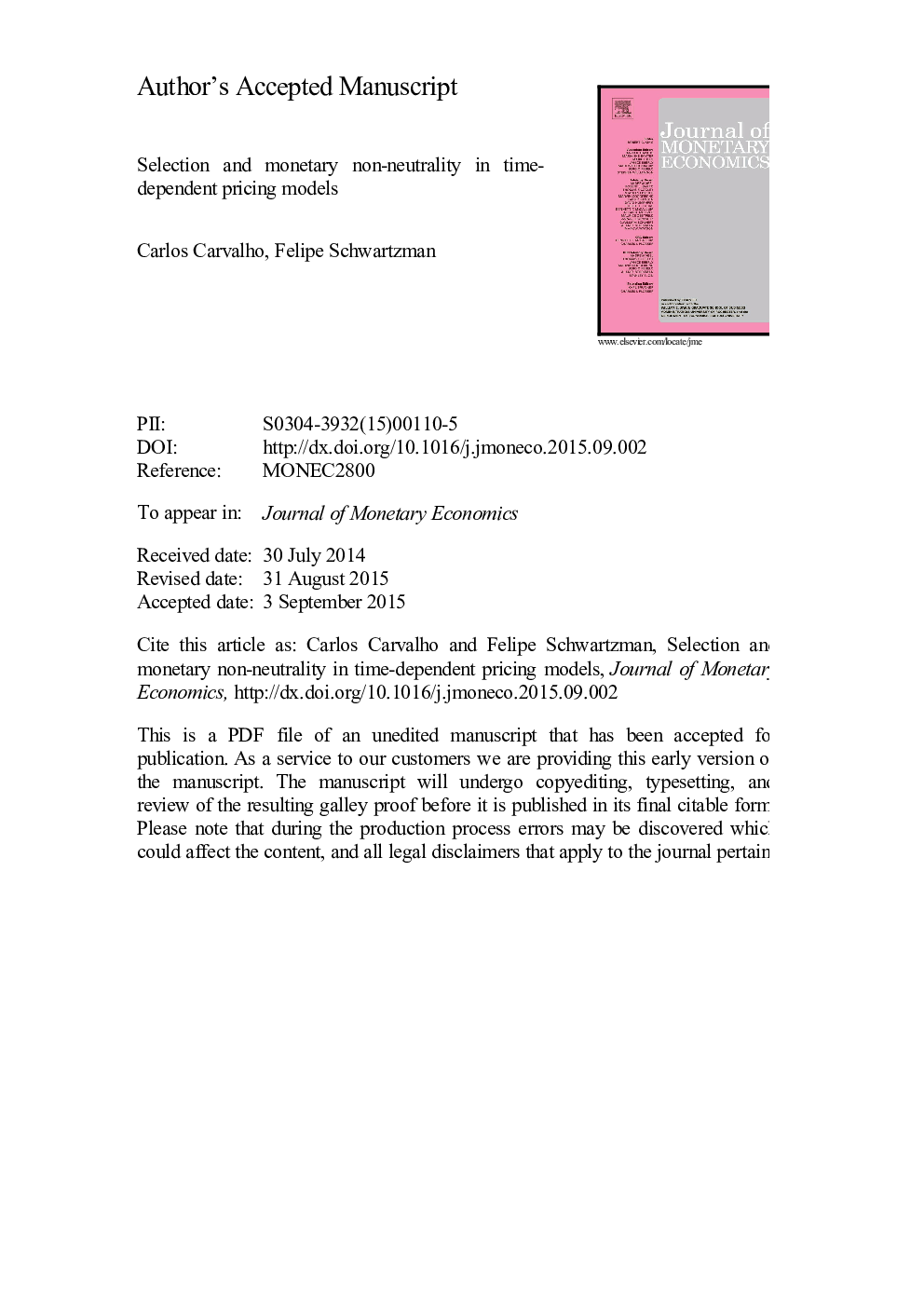| Article ID | Journal | Published Year | Pages | File Type |
|---|---|---|---|---|
| 7368619 | Journal of Monetary Economics | 2015 | 35 Pages |
Abstract
For a given frequency of price adjustment, monetary non-neutrality is smaller if older prices are disproportionately more likely to change. Selection for the age of prices provides a complete characterization of price-setting frictions in time-dependent models. Selection for older prices is weaker and non-neutralities are larger if the hazard function of price adjustment is less strongly increasing. Selection is weaker if there is heterogeneity in price stickiness. Finally, selection is weaker if durations of price spells are more variable. In particular, the Taylor (1979) model exhibits maximal selection for older prices, whereas the Calvo (1983) model exhibits no selection.
Keywords
Related Topics
Social Sciences and Humanities
Economics, Econometrics and Finance
Economics and Econometrics
Authors
Carlos Carvalho, Felipe Schwartzman,
